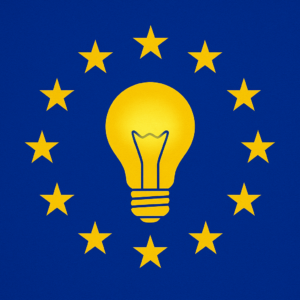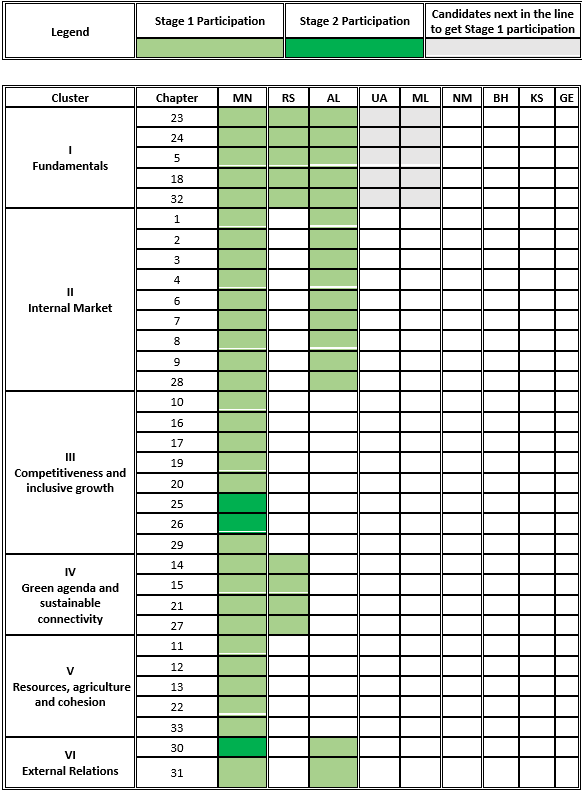Headquarters: Svetog Nauma 7, 11000
Office address: Đorđa Vajferta 13, 11000
Phone:: +381 11 4529 323

Since 2022, gradual integration has become the official framework within the enlargement policy. Designed to frontload some of the membership benefits even before accession, its financial dimension has been operationalised through the New Growth Plan, that is, as the Reform and Growth Facility. However, what remains missing is its political dimension—gradual institutional participation. The Staged Accession Model has advocated pushing both dimensions since August 2021. Besides calling for increased albeit conditional funding, the Model insisted on the need for a structured, predictable, merit-based, and reversible involvement of candidate countries in EU bodies, particularly in the EU Council. In September 2024, CEP revised its proposal to provide a more realistic pathway for participation. Now, as the Council Presidency transitions from Poland to Denmark, and later to Cyprus, the aim of this paper is to inform the Trio on how to operationalise the proposal. It outlines, step-by-step, how the process could be immediately initiated.
Before moving to the procedural steps that would need to be taken, a few words are necessary on the essence of CEP’s revised proposal (see Image 1). It builds upon the original Model, which emphasised the Council Legal Service’s Contribution and the Council General Secretariat’s Commentary on the Rules of Procedure – both confirming the possibility for the “occasional presence” of third countries in the form of an exchange of views. This entailed that a candidate would be invited upon Presidency’s proposal, while necessitating COREPER’s approval with simple majority ahead of the meeting.[1] Moving forward, the revised proposal called for granting candidate countries right to be invited to the Council’s working parties—once the Fundamentals Cluster is opened—in areas corresponding to the opened clusters (Stage 1). Participation would then evolve by inviting the candidates to COREPER and ministerial level meetings — after receiving a positive Interim Benchmark Assessment Report (IBAR) for the Fundamentals Cluster— in areas covered by closed chapters (Stage 2). In this way, participation would be both gradual and merit based, while also giving greater political weight to the opening of a cluster or the closing of a chapter.[2]
Image 1. CEP’s proposal for participation in the EU Council in stages

With the ambition to encourage member states to begin discussing the operationalisation of gradual institutional participation in an effective and timely manner, the following steps are proposed to launch the process:
Step 1: Proposing the Idea to COREPER
The process begins with a political initiative led by the current or upcoming Council Presidency – preferably even by the Trio – informally proposing the idea at the COREPER (the Committee of Permanent Representatives). The primary objective at this stage is to allow all member states to acquaint themselves with the proposal, acknowledge the importance of gradual institutional participation, and secure preliminary support for inviting candidate countries to participate in discussions on selected agenda items. Additionally, the aim of this step is to ensure support of all members, thereby ensuring that future Presidencies share a common understanding and commitment to the initiative.
Step 2: Draft Guidelines Development
Following preliminary support, the Presidency, working closely with the Council General Secretariat/Legal Service, prepares a set of internal guidelines to operationalise the invitation process. These guidelines outline the conditions under which invitations may be extended, including the requirement that participation must serve the interest of the Council. They also define the scope of involvement of a candidate. This would come down to exchange of views between the invited candidates and the member states – without any right to take part in deliberations on other items on the agenda or in the voting procedure – and establish confidentiality measures to safeguard sensitive discussions. The goal of such specification is to make sure Council’s autonomy of decision-making process is protected. Finally, to embed reversibility principle in case of candidates’ backsliding, these should note that prior presence on a particular subject does not create a right to be invited on that subject in the future.
Step 3: COREPER Approval
Once the draft guidelines are finalised, they are submitted to COREPER for formal endorsement. Through this step, COREPER officially agrees with the notion that Council Presidencies should strategically maximise the application of existing rules to enable invitations of candidate countries to specific Council meetings. This endorsement would not only provide the necessary political backing to the practice but also help ensure consistency across successive Presidencies.
Step 4: Anchoring the Proposal in the Enlargement Conclusions
The Council should explicitly reference the approved proposal in its Enlargement Conclusions to ensure that all stakeholders became fully aware of it. This would lend political weight to the proposal in the eyes of candidate countries, while sending a clear message that the closer they are to membership, the greater their access to the Council will be. In this way, the predictability of the process would be strengthened.
Step 5: Implementing the Proposal
The Presidency in charge of the Council’s proceedings at the time of the proposal’s adoption should immediately and fully implement it. To institutionalize the practice, the Council’s annotated agenda procedures should be updated to reflect the new approach. For each relevant meeting, the agenda would explicitly indicate when candidate countries’ are invited to attend a specific agenda item. To keep the process merit based, the Presidency should keep track of candidates’ performance in cluster openings and chapter closures (see Annex 1 for a breakdown).
This would involve inviting candidate countries that have opened the Fundamentals Cluster to occasionally participate in discussions on relevant agenda items within the Council’s working parties, in areas corresponding to the clusters they have opened (Stage 1). This step could produce an immediate effect, as several candidates already fulfil the preconditions for participation. It should be understood, however, that while invitations would be extended, candidates may not always wish to participate in, or have the capacity to attend, all meetings for which they are eligible.
Furthermore, for candidates that have received a positive Interim Benchmark Assessment Report (IBAR) in the Fundamentals Cluster and begun closing chapters, invitations should also be extended for participation at the COREPER and ministerial level, limited to policy areas corresponding to the closed chapters (Stage 2). Montenegro, having already achieved this milestone, would therefore be eligible for such an elevated form of participation. By applying these measures, the Presidency would ensure that candidate involvement is gradual, merit-based, and aligned with each country’s progress and capacity.
Step 6: Evaluation
Right before the completion of its term, the Presidency would provide feedback to member states on the proposal’s functionality, while simultaneously gathering reactions and assessments from member states. This exercise would allow for the refinement of the practice and the early identification and resolution of any issues that may arise—such as clarifying criteria for invitations or strengthening confidentiality protocols—to ensure that the procedure remains aligned with the Council’s operational needs, political sensitivities, and procedural limitations.
***
The EU has a powerful yet largely overlooked tool of influence at its disposal. By operationalising gradual institutional participation, it has the opportunity to strengthen the political dimension of gradual integration. In these changing times, communication and exchange of views are more important than ever. Given that the EU’s legal order allows for candidates’ participation in the form of an exchange of views, focusing on its implementation can only bring added value at no cost for the EU. From the member states’ perspective, enabling the Union to incorporate candidates’ feedback into its policies would make them more robust and resilient, increase the EU’s political leverage, and contribute to European — not just EU — strategic autonomy. From the candidates’ perspective, it would allow them to “practice membership” before formal accession by socialising with their counterparts in Brussels, boosting their institutional capacities, and further incentivising reforms. In short, the EU can transform an ad hoc practice of inviting candidate countries into a gradual, yet controlled and merit-based, feature of the enlargement policy.
Annex 1 A breakdown of how the proposed gradual institutional participation in the EU Council could be applied in 2025 per candidate country

[1] Except in foreign affairs meetings for which unanimity is required.
[2] Simultaneously, it would be easily reversable, as Presidency would not need to propose inviting the candidate or CORER to approve, in case there is registered stagnation or backsliding.